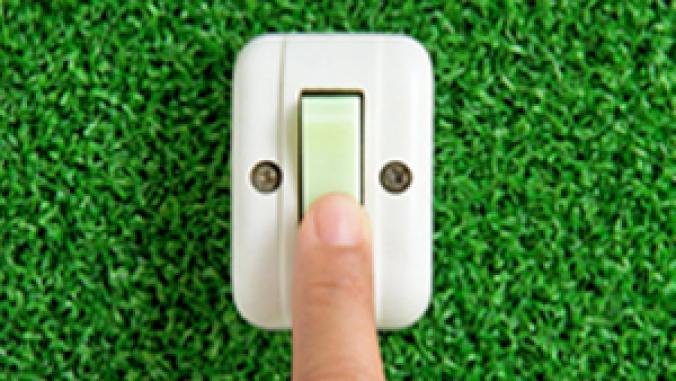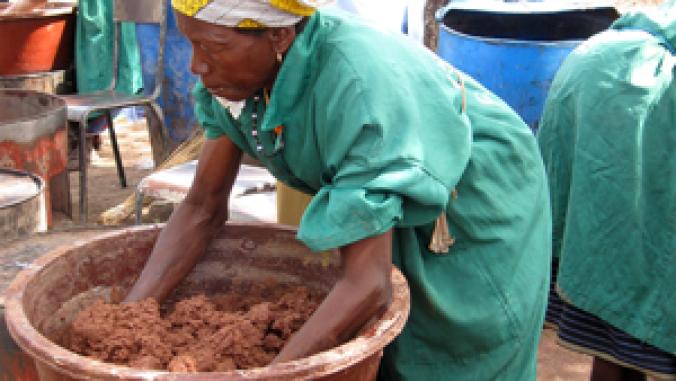5 Lessons from AirDye on Building a Strong Green Brand
<p>Efforts by the firm AirDye to sharply reduce the water used by the textile industry in coloring fabrics offer marketing lessons to any company than wants to build a green brand.<br /> </p>

Textile dyeing and treatment causes 17 to 20 percent of industrial water pollution, estimates the World Bank. All counted, the industry dumps 72 contaminants into the water supply. Current water filtering technology is unable to remove 30 of these toxins.
A startup recruited CEO Larry Levy and chief sustainability/marketing officer, Paul Raybin to turn its innovative dye technology into a commercial product and market it. That was eight years ago. Since then, AirDye Solutions developed a green product to remake the textile industry's water intensive and polluting dyeing process.
The AirDye process is different. Rather than using water to dye the fabric and then clean-up the water, AirDye uses no water to color synthetic fabrics. Hence there is no toxic water created. A heat transfer process injects dye directly into the fibers in the form of a gas which fuses dye to fabric.
More than green benefits were required to shift an industry maniacally focused on its margins. Five marketing strategies emerged that could be used by any company seeking to build a successful green brand.
1. Define a Unique Position
After many months, the proverbial "aha moment" struck Raybin. He realized the new process required no water. This would be the new brand's focus.
This was several years before water issues were mainstream. Most sustainability brands were selling energy savings or greenhouse gas reduction, which was also an option for AirDye since the new process uses energy frugally.
But Raybin, trained as a marine biologist, understood the ecology of water. He agreed with thought leader Jacques Leslie, who predicted that "water will be to the 21st century what oil was to the 20th: an increasingly scarce but crucial natural resource."
Raybin believed that the consumer would connect to water issues. First it is easier to communicate about water. People can visualize a gallon of water while a ton of greenhouse gas is abstract. The impact of water issues is evident right now. The unnaturally colored industrial waste water dumped by some manufacturers is a visually compelling story.
Water is already scarce in much of the developing world. We can empathize with the women and children who may spend up to half a day finding water and then carrying it back home to the family.
Once the brand focus was determined, a name that reinforced the position was needed. AirDye was selected, a poetic contrast to the current water-based method. Its original moniker, P3 (Permanent Performance Printing), would be retired. The name of the company was also changed from Colorep.
2. Get Hard Data
To substantiate their environmental claims, AirDye hired FiveWinds International to review its new process and complete a lifecycle analysis. An LCA is a rigorous ISO compliant standard that measures the total environmental footprint of a product or process.
To highlight the improvements provided by the new process, AirDye would also need a LCA for the existing wet dye process. Raybin laughed and said, "I was naive to think we could easily get the data. As we investigated, we found that factories that are polluting lakes, rivers and streams are not publishing data."
AirDye finally located a published LCA that measured a state-of-the-art facility in Europe. Although this facility was well above average, the results were still dramatic. As documented in AirDye's Environmental Profile, the new process uses 95 percent less water to create prints, and up to 88 percent less water to create solid colors, compared to typical textile industry water consumption.
3. Provide More Than Green
Raybin visited with potential customers during the development process to gain feedback. He was excited about his visit to Patagonia since "Patagonia put their brand in the bull's-eye of sustainability." If anyone would appreciate the green benefits, they would.
Patagonia got it, but still had a business to run. Raybin reported, "A Patagonia executive stated 'If it costs a penny more than the way we do it now we are not going to use it.' "
Raybin understood. It's not that Patagonia was inconsistent -- sometimes profits will need to win over planet. "If you can't sustain your bottomline, you won't be in business very long", said Raybin. "If you are not in business, you are unable to carry out your sustainability mission."
The new product would need to provide a competitive advantage.
Because AirDye makes coloring fabric easy and fast, manufacturers can wait to see what is selling thus reducing inventory and markdowns (price reductions on items not selling). Raybin explained, "The AirDye process allows the manufacturer to shift from 'make and sell' to 'sell and make'."
For designers, the new technology expanded their options. They could color each side of the fabric differently. Patterns could be colored precisely allowing the designer to add more details making the pattern richer. Since the color was bonded to the fabric, it would stay vibrant.
4. Consider a Push -- Pull Strategy
Even with a great product, industry inertia makes it hard to break-through. To overcome this inertia, Raybin concluded that marketing just to the manufacturers -- a push strategy -- would not be enough.
He decided to also use a pull strategy and market directly to the end consumers to create demand. For consumers faced with similar products, a product that uses less water would likely be the tie-breaker.
5. Build a Community
To connect with both consumers and business customers, Raybin used social media extensively. Compared to traditional advertising, social media was a low cost option.
But more importantly, the relationships created through social media are deeper and stronger. "You may get the eyeballs with a Vogue advertisement", said Raybin, "But you get the heart when blogging, tweeting and posting on Facebook."
Results
AirDye launched about three years ago at the start of the global recession. Despite this challenge, AirDye is penetrating their two primary markets; manufacturers of interior textiles and apparel.
One leading customer from apparel is the fashion house, Costello Tagliapietra. Their designs showcased AirDye's capabilities. For their first season using AirDye, Costello took photos of the sunset and a lake in Brooklyn. Costello and his business partner, Tagliapietra then collaborated with AirDye to print the digital artwork onto fabric.
The press raved about the results. The Plains Dealer said, "The color palette was dazzling … CT used sun-bleached shades of orange, mustard, violet, moss green and taupe to spectacular effect." NBC New York said, "The lush palette was entirely unique."
CT also eliminated the lining in some garments since the fabric could be colored dark on its interior. This change enhanced the fit of the garment and reduced costs for materials and labor.
Materialised serves hospitality, healthcare and senior living facilities. The company is located in Australia and sells throughout the Australasia region.
The company faces higher wages and strict environmental regulations compared to competition that manufacture off-shore. Gary Price, owner and managing director, credits the AirDye process with keeping manufacturing in Australia.
Price provides a large range of samples for his customers. He then waits for orders before coloring the base cloth, cutting his inventory costs and risk.
His customers also appreciate the quality of the product. The institutional facilities may offer more than hospital colors to provide a home-like setting since the AirDye textiles survive industrial washing without dulling.
All the success stories are great news for AirDye and Raybin. But AirDye also fulfills a personal mission for Raybin. When he was a student, his goal was to help polluters cause less harm. After a detour as an executive in the printing industry Raybin can finally say, "With AirDye, I am doing my life's work."
Image courtesy of AirDye.





